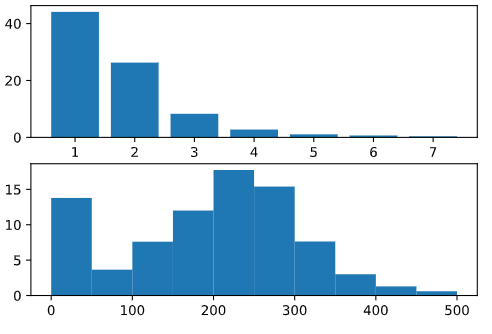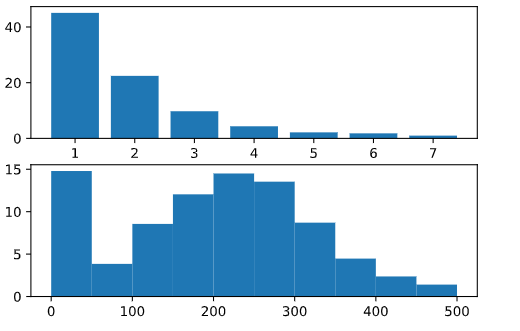not sure if this tells a lot but Dec/Jan 2019 of certain Belgian breakaway specialist


not sure if this tells a lot but Dec/Jan 2019 of certain Belgian breakaway specialist


Thanks. I guess what I’d like to know is what was the delta of how you were training (endurance, z2, low intensity, etc), before and after getting your LT1 tested. What was the change in the prescription?. Seems like you could use HRate for this description.
Apologies but I do not really understand what you’re asking. I’ve had several lactate tests done over the years.
Sorry for being confusing. Here’s one more time;
Before your first lactate test, ostensibly you were training Z2-endurance with a prescription of heart rate and/or power. After your first test, you got your LT1 and based on that you modified your endurance training (at or below LT1). I would like to know what was the difference between before and after (the first test) in terms of the training prescription for endurance (at or below LT1) with regards to Heart Rate and/or power.
I’ve had my first tests 25 years ago … but I don’t know the results anymore.
winter 2016 test, when I started real training again after a 6 year break (got 3 kids, exercised moderately during those 6 years). LT1 at 180W.
winter 2017 test : bumped up volume to 20hours in the 2017. Just rode. No “prescription”. Plenty of tempo. LT1 at 240W
2018 & 2019: strong polarised training in winter + messing around with low carb, 20h/wk; winter 2019 test: LT1 245W
2020: covid year; just rode happy hard; still at 20h/wk; current testing LT1 260W
Heart rate at LT1 has never changed in those years (despite slightly different test procedures)
I guess this is a high level summary of the last years.
What do you hope to gain from this information?
What I get from it, is that there might just be hope for me yet.![]()
I was surprised by your comment on twitter saying that knowing your LT1 was a game changer. Right now I train my z2-endurance based on a mix of RPE and the traditional zones for HR and Power, currently the upper end is about 180w and 148 bpm…So I’m trying to assess how different this prescription would be if I actually did a lactate test.
I guesd the answer is in the approach of POL vs ISM model.
Under POL, you will do your long ride below LT1 which means more at the bottom/mid of Coggan Z2. Under ISM you will ride right at LT1 or around it.
For me this means riding between 150-200w on POL vs at around 200w under ISM.
Of course I adjust intensity based on HR for long ride, but for a 3+h ride the RPE after the ride is much different.
To relate to your twitter post, did you switch to ISM model in 2020? This is a nice bump 245 to 260 at Lt1 btw ![]()
If this is the case, it wouldn’t make any difference to me. I make my own training prescriptions and as a principle always used the top of z2 as the target for the zone, same with threshold.
I did say this?

well, implicitly. Like many others I did not learn about ISM’s training ideas before Pog’s victory. I started my tempo endurance riding in March when racing season collapsed.
For me this does not come as a huge surprise. I avoided upper endurance/tempo for almost two years. I started training this level again and improved. The big question for me is how I can move the entire spectrum to the right. Not just this one point. Doing a lot of fasted/low rides at 20hr/wk was definitely not the right approach.
@sryke When you are doing the 10 minute protocol do you warm up first and if so is it just a gentle one? After ummimg and aaring for months I’ve finally ordered a meter.
yes, 30-60min easy, depending on when I have eaten before. Pre-breakfast La: 1.5mmol, post-breakfast La: 2.8mmol; 45min into an easy ride: 1.1 mmol. Exercise normalises things, just as with blood sugar.
however, as I get older I tend to need more and more warm up. Not just before testing. It takes a while to get the engine firing from all cyclinders
So an 80 watt increase in LT1?
Thats amazing
And these are the sort of things the pros do so well; TR (love you guys) is obsessed with FTP rises becuase they are a subscription service and they need clients to have quick wins
But the real long term gains are the ones that take place over years; 80watts more at LT1 (heck even 20-30 watts more) will have tangible real world implications on ride performance
Thanks. That’s more or less what I thought. It actually means the the commercial tests with shorter steps and a very short warm ups are a bit useless for establishing at least LT1
well, TR motto is “getting faster”. I have already touched it but this increase in AeT/LT1 did not come with a similar increase in the second threshold/FTP/VT2. And even in longer races, this is important. Perhaps a more FTP driven approach would have yielded better performance results. Who knows.
So how long do you wait after eating breakfast? I once tested about an hr after eating and values were higher than I expected. Curious how you determine the LT1 break point too.
I don’t have a fixed protocol. I always take baseline measurements. If these don’t normalise I don’t continue with testing. However, I do not really test so often. Values seem to normalise quickly for me.
Piecewise linear regression … just drawing two lines works as well

Thx so much. Great helpful info.